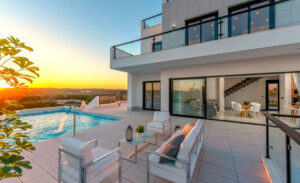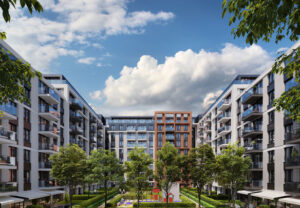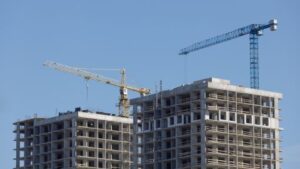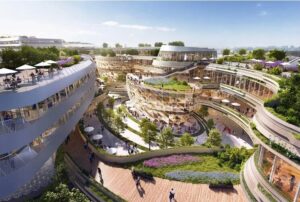
In January–June 2025, foreigners purchased 71,155 homes in Spain, which is 2% more than a year earlier; with their transactions accounting for 19.3% of all home sales, according to the Spanish Notary Council. The British lead the way with 5,731 transactions, followed by Morocco with 5,654 and Germany with 4,756, according to notaries.
Among the nationalities that showed historic highs was Ukraine: in the first half of the year, 2,165 home purchases by Ukrainian citizens were registered, which was a record for the series of observations. Citizens of the US, Portugal, Italy, Morocco, Colombia, and the Netherlands also set new records.
According to notarial statistics, the main concentration of transactions with foreigners is recorded in the coastal provinces and islands—Alicante, the Balearic Islands, Malaga, and Santa Cruz de Tenerife. The market continues to show price differences: American buyers paid an average of €3,465 per square meter, the highest among foreigners; Ukrainians paid around €1,832 per square meter, and Moroccans paid €747 per square meter.
According to notaries and the regional press, purchases by Russians fell by 17.4% and remain below pre-crisis levels; they did not feature among the top nationalities in terms of the number of transactions.

Apartment prices in Serbia in the second quarter of 2025 were 5.78% higher than a year earlier; compared to the first quarter, the increase was 1.36%, according to the statistics agency. In the old housing stock, annual growth reached 5.89%, and in new buildings, 5.57%.
According to Eurostat data for the same period, the average growth in housing prices in the EU was 5.4% year-on-year, with significant variations: from a decline of 1.33% in Finland to growth of 17.23% in Portugal, 15.51% in Bulgaria, and 15.12% in Hungary.
The main trends in the real estate market in Serbia at the moment are as follows:
1) The balance of demand is shifting in favor of fully finished apartments and energy-efficient new buildings in large agglomerations, primarily in Belgrade and Novi Sad.
2) The price gap between new buildings and secondary housing remains significant, but the rates of increase are similar — 5.57% versus 5.89% year-on-year, indicating broad demand support for both segments.
3) The external background is neutral-positive: Serbian dynamics are close to the European average, but without the overheating characteristic of a number of EU markets.
Vera Yegorova-Tolsta, director of the Vidovstan real estate agency (Belgrade), commented on the market situation for Serbian Economist:
“We see sustained interest in well-located properties with clear operating economics — these are new business-class buildings and liquid secondary properties with reasonable utility costs. Buyers have become more careful in comparing options in terms of energy efficiency and management infrastructure, which supports quality projects even at a higher price per square meter. In Belgrade, offers that meet these criteria continue to sell quickly, thanks to local demand and buyers moving from other cities.”
Given the current trajectory of interest rates and household incomes, the baseline scenario is moderate price growth within the limits of inflation plus a premium for location and energy efficiency.
Risk factors for prices include a slowdown in mortgage lending and rising developer costs; support factors include limited supply in prime locations and a moderate influx of internal migrants to the Belgrade agglomeration.

The total area of residential buildings for which construction permits were issued (new construction) in January-June 2025 increased by 45% compared to the same period in 2024, to 2 million 965.2 thousand square meters, according to the State Statistics Service (SSS).
According to the statistics agency, in January-June 2025, the total area of new construction of apartment buildings increased by 45.8% compared to last year, to 2.86 million square meters. The number of apartments in multi-apartment buildings declared at the start of construction increased by 51.5% and amounted to 33 thousand.
The largest number of new homes in the first half of the year was declared in the Kyiv region: the total area of new housing construction was 904,900 square meters (15,500 apartments), which is 2.3 times higher than in the first half of last year.
Significant volumes of new housing in the reporting period were also declared in the Lviv region – 540,700 square meters (6,900 apartments), which is 65% more than in the first half of 2024, as well as in Ivano-Frankivsk – 234,600 square meters (+8%, 3.8 thousand apartments), Zakarpattia region – 159.3 thousand square meters (+11%, 2.4 thousand apartments), Poltava region – 146.9 thousand square meters (1.8 thousand apartments), Vinnytsia – 130.9 thousand square meters (“minus” 38.7%, 2.9 thousand apartments) and Volyn – 115.2 thousand square meters (+17.7%, 2.5 thousand apartments).
In Kyiv, in January-June 2025, the total area of new construction of housing was 367.2 thousand square meters (4.2 thousand apartments), which is 1.9 times more than last year.
The State Statistics Service reminds that the figures do not include territories temporarily occupied by the Russian Federation and parts of territories where hostilities are ongoing (or have been ongoing).
As reported, the total area of new housing construction in Ukraine in 2024 decreased by 7.2% compared to 2023 – to 3.9 million square meters, while in 2023 it was 4.2 million square meters, in 2022 – 6.67 million square meters, and in 2021 – 12.7 million square meters.

Consulting firm Deloitte has published the 14th edition of its Property Index 2025 report on European housing markets. The study covers 28 countries and notes how markets are adapting to high rates amid weak supply: affordability in a number of capitals remains at multi-year lows, and demand is shifting to rentals. Deloitte
The least affordable capitals are Amsterdam (15.4 annual salaries for a “typical” 70 m² apartment), Athens (15.3), and Prague (15.0); Košice ranks fourth (14.2). At the opposite end of the spectrum are Odense (Denmark) and Turin (Italy), where the average purchase price is 4.9 times the annual income, as well as Manchester (UK) — 5.3.
Ukraine was not included in this study.
Deloitte notes that against the backdrop of a “bottleneck” with new projects and continuing demand, the rental segment is strengthening (rent increases are noticeable not only in capital cities but also in regional centers). At the same time, high rents and regulatory lags in permits continue to put pressure on property affordability, especially in large agglomerations.
Deloitte Property Index 2025 — a comparative study of European housing markets: prices for new buildings, affordability (in years of gross salary for a 70 m² apartment), rental dynamics, and mortgage rates. Key findings and figures are available on the Deloitte Property Index 2025 report page.